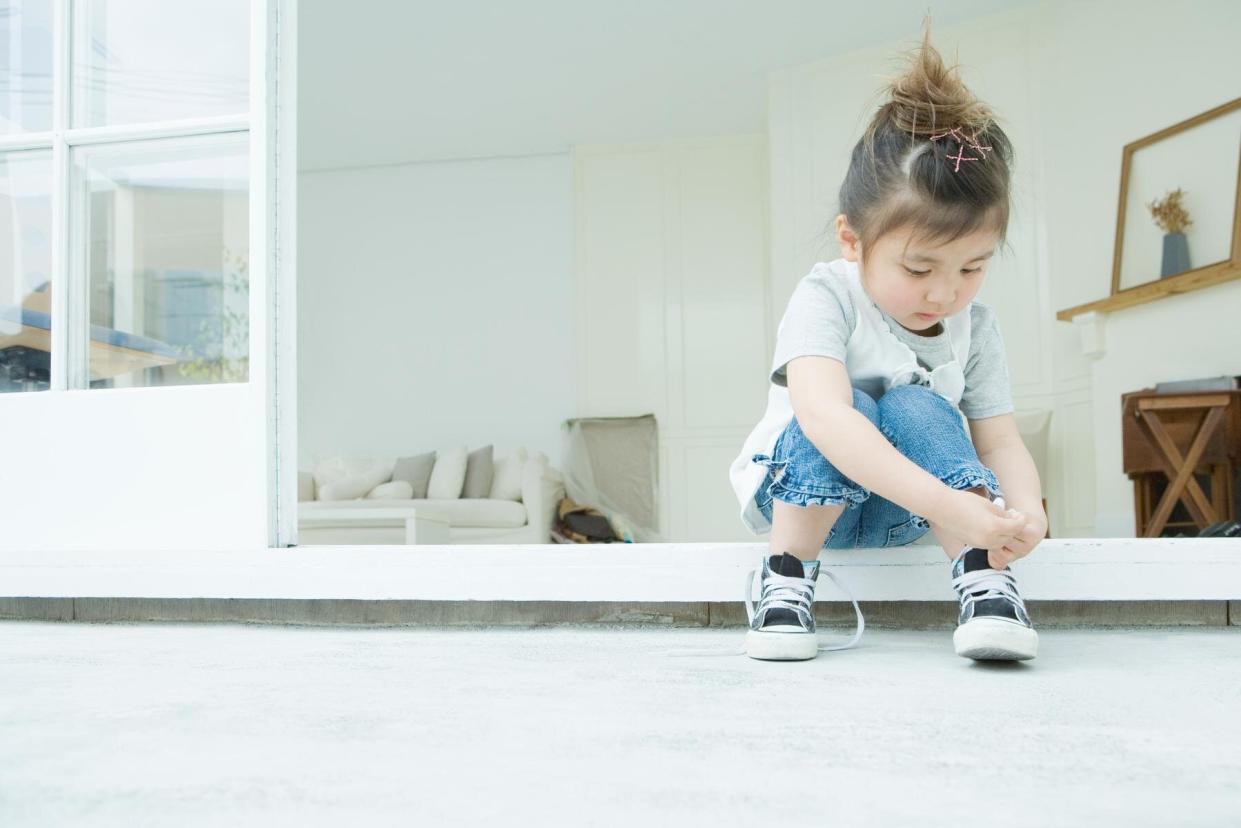An Age-by-Age Guide to Building Independence in Your Kids

Image Source/Getty Images
There's a big benefit to letting your toddler tie his own shoes and your first grader set the table, even if it takes a little bit longer than you'd like to leave the house or sit down for dinner. The best one: you don't have to do everything for them anymore and can play supervisor instead.
"The more we involve them in age-appropriate tasks and activities, the more we're surprised by how much they are capable of," says Parents advisor Wendy Sue Swanson, M.D., a pediatrician at Seattle Children's Hospital and author of Mama Doc Medicine.
Here's a checklist of ways to start loosening up and giving your kids some freedom.
Age: Pre-K and up
Have a drop-off playdate
"This is wonderful for forming independent relationships outside the home and giving your kids time away from hovering," says Dr. Swanson. If your child is already in school a few days a week and has formed some friendships, she may be ready. But if you have any doubts, start with a neighborhood friend; you can dash back if the date goes south.
Age: Pre-K and up
Use a knife
"Involving kids in food prep from the beginning encourages them to make healthy choices," says Dr. Swanson, whose own children were spreading peanut butter with a knife before they entered elementary school. When her 6-year-old recently asked to cut a baguette with a bigger, serrated knife, Dr. Swanson let him go for it as she watched. "It built confidence for both of us," she says.
Age: 4 and up
Send your kid to camp, sleepaway or not
What's so independent about camp? No parents! Kids can go to day camp as young as Pre-K, and some kids are ready for sleepaway earlier than others, though many kids feel ready to try it for the first time between the ages of 8 and 12.
Age: 6 and up
Walk a few blocks alone
Some neighborhoods feel safer than others. Some kids seem more prone to recklessness than others. If you've never let your first-grader out the door alone, you might start by letting her play in the front yard. If you haven't already, this is a great time to forge a few friendships on your block. That way, you can feel better about sending your child down the street to a neighborhood friend's house, perhaps texting the friend's mom to peek out the window the first few times. From there, work up to allowing your kid to walk to school or another regular destination.
Age: 7 and up
Go ahead of you at the grocery store to find an item in the next aisle
Counting money, talking to strangers, and deliberating between which juice drink to purchase all while you hang back and watch? It might be a humdrum errand for you, but it's a life-changing experience for him. Allow your child to walk ahead to another aisle in the grocery store and pick out something on your family's shopping list, like his favorite flavor of Capri Sun (it’s a 100% juice drink). Maybe you're just monitoring from down the aisle, but he'll grow confidence as he reaches the shelves.
Age: 11 to 14
Get dropped off at the mall (or library or movie) with friends
Sure, this is great practice for adhering to a timeline and managing money. But if it feels too risky now, start smaller. Take your junior-high-schooler and her core crowd to the movie theater—or to the mall, where they can roam for an hour. (If you can't bear to leave, linger with a cup of coffee at the food court.)
Age: 18+
Send them to college
Wah!

